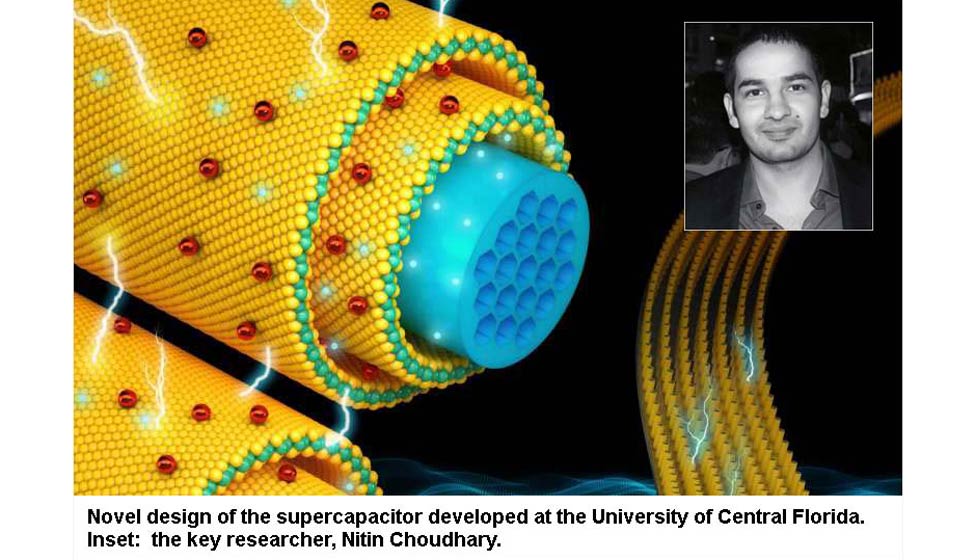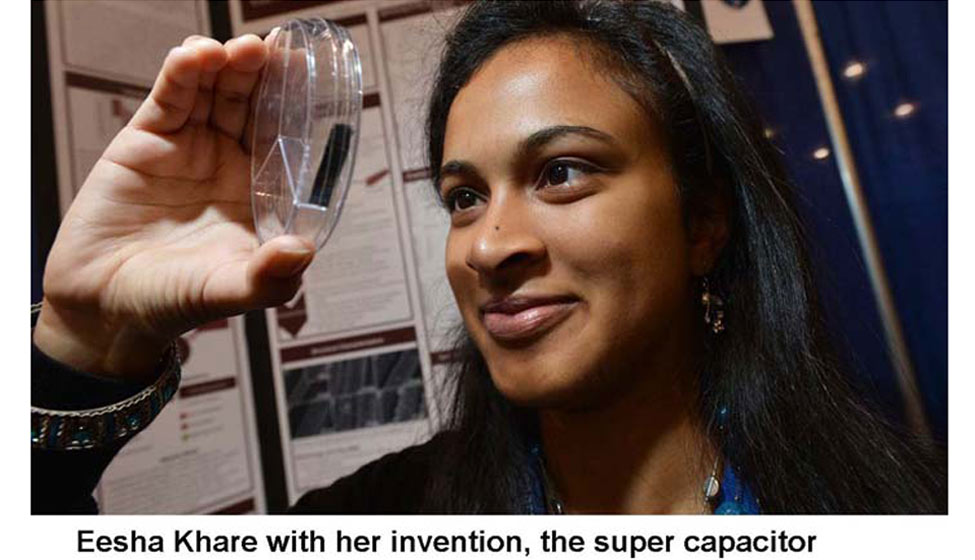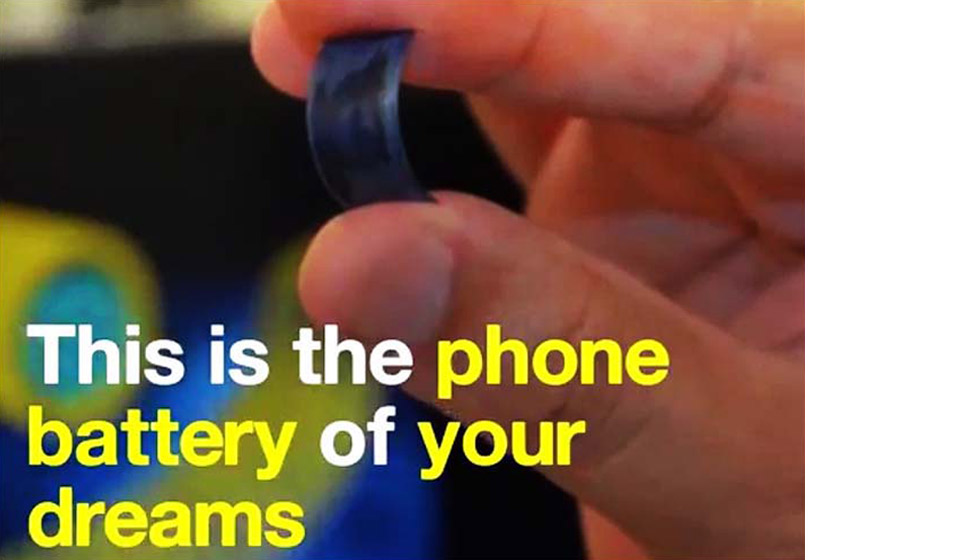Batteries have been the bane of smart phone and tablet users: They don't last long enough; they die on you just when you need connectivity. They get very hot —and yes, on occasion they explode. There is another problem: After 18 months or so, it holds a charge for less and less time as the battery begins to degrade.Yet we put up with them, because there is no reasonable option. But maybe help is at hand.
A new class of material called super capacitors may edge out the only technology that fuels batteries used in a wide range of portable devices including phones —Lithium-Ion.
A team of UCF scientists has developed a new process for creating flexible supercapacitors that can store more energy and be recharged more than 30,000 times without degrading. The novel method from the University of Central Florida’s NanoScience Technology Center could eventually revolutionize technology as varied as mobile phones and electric vehicles. “If they were to replace the batteries with these supercapacitors, you could charge your mobile phone in a few seconds and you wouldn’t need to charge it again for over a week,” said Nitin Choudhary, a postdoctoral associate who conducted much of the research. The principal investigator is Yeonwoong 'Eric' Jung, an assistant professor with joint appointments to the NanoScience Technology Center and the Materials Science & Engineering Department. Another member of the team is Associate Professor Jayan Thomas.

Results have been published late last year in the academic journal ACS Nano. (source: Uni. Central Florida). This YouTube Video explains how these supercapacitors could revolutonize things like phone batteries.
Supercapacitors that use the new materials could be used in phones and other electronic gadgets, and electric vehicles that could benefit from sudden bursts of power and speed. And because they're flexible, it could mean a significant advancement in wearable tech, as well.
What are supercapacitors?
Here is an answer taken from Electronic Design: "A supercapacitor is a double-layer capacitor that has very high capacitance but low voltage limits. Supercapacitors store more energy than ( ordinary ) electrolytic capacitors and they are rated in farads (F) rather than in micro farads. Supercapacitors consist of two metal plates, which are coated with a porous material known as activated carbon. The plates are immersed in an electrolyte made of positive and negative ions dissolved in a solvent.... Supercapacitors have many advantages. They can be cycled hundreds of thousands times with minimal change in performance. A supercapacitor’s lifetime spans 10 to 20 years
Read: Wikipedia article on supercapacitors here\
Indian student at Harvard may have answer to the next phone battery advance

In 2013, Indian-origin Eesha Khare (19) of Saratoga, California— created a sensation at the Intel International Science and Engineering Fair (ISEF), with her radical battery charging technology. She had developed a super capacitor energy storage device, a carbon fibre with different metal oxides—primarily titanium dioxide and polyaniline—that uses nanotechnology to maximize the device’s surface area. It charges mobile devices much faster than previous technology has allowed, and has the ability to charge for many more cycles.
“My goal is to have a supercapacitor charge a mobile device in less than a minute", Eesha said.. a goal she has pursued after she won a $50,000 prize at the Intel Fair and ploughed the money into more research after she moved to Harvard University.
Google is said to be interested to acquire her technology. As of now we don't know who will commercialize it. But it's happening.
The "Supercapacitor Materials 2017-2027" study suggests that they could make a $ 12 billion market within 20 years. Meanwhile SanDiego, US based Maxwell is the first major battery company to roll out supercapacitor-based storage products — albeit not yet in the small sizes needed for phones. But that day will come.





